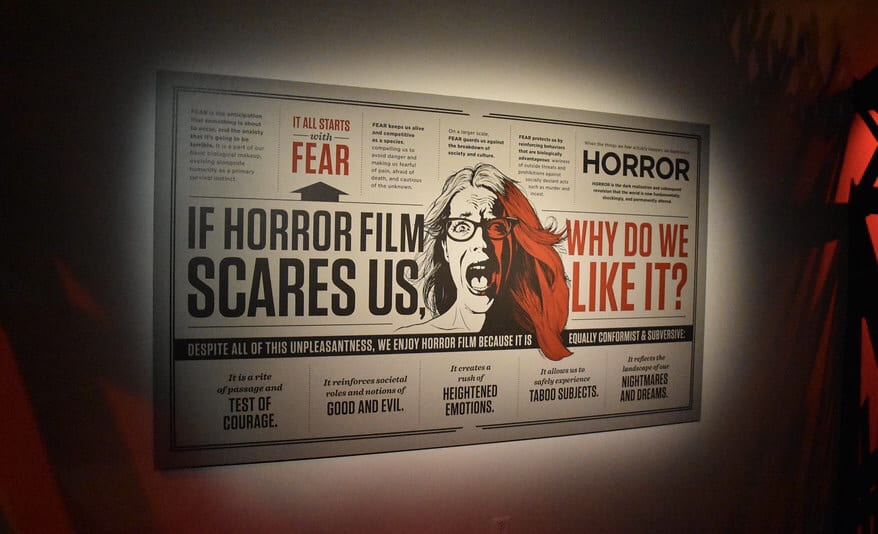Horror movies are known for sheer gore and jump scares, but the really good ones are much more than that. Horror reflects on society and starts up important conversations by displaying common fears that we often try to ignore.
This post is for a huge unit we studied in PLP since October till late December called “Monster in the Mirror”.
We were challenged with answering, “Why is horror such an effective way to reflect and comment on our society?”, and as a class creating a truly terrifying horror film that reflects on a societal issue today.
This was definitely the most challenging time consuming project yet. The work put in to research for this topic of horror was surprisingly just as enormous as trying to produce a whole film. I have already created blog posts on the films Halloween, Get Out, and Frankenstein that we watched during this unit if you would like to check them out.
In this blog I will cover why we are so drawn to horror and what it takes to produce a horror film.
Research
To expand our research to answer our driving question we went on a field study to Seattle.
The best part of this trip was being able to go to the MO POP and experience their horror exhibit.
In that exhibit I was able to answer almost all my questions about horror by reading the posters watching the short films and interviewing a horror lover.
I took a lot of notes from what I learned from this exhibit that became very handy as we continued leading up to project.
Brainstorming
While we were in Seattle we began brainstorming story ideas relating to social issues and roles:
We had a list of 7 story ideas including topics such as mental health and the media but where advice to pick a simpler topic that we relate to.
At the same time we had interviews held for the people interested in being apart of the key creative team. That group collectively decided that we would base our story on the idea that high school kids are often stereotyped and divided.
Once all the roles were decided and and revalued we were on to the first major stage of development.
Pre Production
Pre production is key to development a film taking a huge 40% of the time spent.
Are outline of what we tackled with in this stage looked something like this:
- Concept: each members vision for their role
- Location: breakdown of scenes
- Tec: geography of the set up
- Production: making sure everyone’s on the same page
This is where our script was development and mostly completed as well.
Production
In most films production only takes 10% of the time spent due to the preparation done in pre production. If the work is not done in the previous stage there is no chance the filming process will run smoothly and will probably take much more days than expected to make up for it.
Even though we where warned by our teachers, and by a PLP alumni in film school that came in to help us early on, we still didn’t put enough effort and attention to detail in pre production as we needed to.
Learning Outcome
From this experience I learned that to be productive you can’t wait around for someone to assign you a task. You have to take charge and be confident in your role without overstepping into someone else’s.
